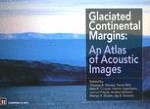1997 | OriginalPaper | Chapter
Arctic Ice Gouging and Ice Keel Turbates
Authors : Peter W. Barnes, Erk Reimnitz
Published in: Glaciated Continental Margins
Publisher: Springer Netherlands
Included in: Professional Book Archive
Activate our intelligent search to find suitable subject content or patents.
Select sections of text to find matching patents with Artificial Intelligence. powered by
Select sections of text to find additional relevant content using AI-assisted search. powered by
Distinctive surficial morphology (Fig. 1) and stratification are generated when sea-ice keels are driven along the seabed in the Beaufort Sea (Fig. 2). The morphology consists of linear ice-gouge furrows that criss-cross extensive shallow shelves in overlapping patterns (Fig. 3). Intense ice gouging in the Arctic is associated with the stamukhi zone [Reimnitz and Barnes, 1974], where sea-ice ridges form and are grounded on the shelf between 15–50 m water depth. Ice gouges in the Beaufort Sea typically are incised 1 m into the sea floor with maximum incisions over 4 m deep, relief of over 7 m and densities greater than 200 km-2 [Barnes et al., 1984]. The orientations and terminations of ice gouges indicate oblique uphill scouring as well as strong shore-parallel movement. Sea-floor morphology linked to studies of ice motion at Barrow, Alaska (Fig. 4) support the idea that gouging occurred during ice break-up [Shapiro and Barnes, 1991]. In contrast, investigations of ice-gouge terminations off Canada indicate ice-push events resulted from ice motion in response to storms during freeze-up [Héquette et al.,1995].
